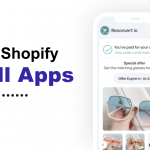How to Build E-commerce Store with WordPress Gutenberg Blocks and WooCommerce
- Anurag Pandey
- Last updated on December 26, 2024
- eCommerce, Woocommerce, WordPress
- 8 minutes read
Table of Contents
ToggleWith the rapid growth of online shopping, the ecommerce industry is shaping the future of buying and selling products directly to customers.
WordPress and WooCommerce are the most powerful tools to build and manage your ecommerce website.
Building a stylish shop page in WordPress using Gutenberg and WooCommerce is a great choice for eCommerce store owners.
With Gutenberg WooCommerce integration, WordPress users can create professional ecommerce stores without depending on custom coding or complex page builders.
WordPress WooCommerce product blocks make it simple to showcase products effectively, enabling the creation of engaging e-commerce websites with ease.
In this guide, I will share with you how to build ecommerce store with WordPress Gutenberg and WooCommerce, highlighting their usability, versatility, and efficiency.
If you want to create a WordPress website using Gutenberg but don’t know where to start, don’t worry! Check out our blog, which will help you build your WordPress website
Why Use WooCommerce with Gutenberg?
WooCommerce is a free, open-source plugin for WordPress that helps you create and manage an online e-commerce store.
It offers features like product listings, secure payments, and shipping options, making it easy to build e-commerce websites and customize your WooCommerce shop page design.
When paired with customizing WooCommerce with Gutenberg, you can build e-commerce store with Gutenberg and WooCommerce to take your online store to the next level.
Some of the key reasons to use WooCommerce with Gutenberg:
- Easy Customization: WordPress Gutenberg blocks allow for drag-and-drop page building. You can start designing product pages with Gutenberg, creating grids, and layouts without coding.
- Increase Speed and Performance: A lightweight WordPress block-based editor ensures that your WordPress website remains fast and efficient.
- Reusable Blocks: Save frequently used designs as reusable WordPress blocks to simplify future editing.
- Built-in WooCommerce Blocks: WooCommerce offers specialized WordPress Gutenberg blocks for products, reviews, checkout pages, and more.
- Easy Integration: Both tools are developed to work easily within the WordPress ecosystem.
For those curious about the future of WordPress, you might enjoy reading “The Future of Gutenberg: Exploring Full-Site Editing (FSE)“, where I explain how Gutenberg continues to evolve beyond the content editor.
Step-by-step guide to building a WordPress WooCommerce store with Gutenberg
Now it’s time to understand how you can easily build e-commerce store with Gutenberg and WooCommerce.
Let’s directly jump in to learn more about the WordPress WooCommerce Gutenberg tutorial below:
Step 1: Set Up Your WordPress Website
To build an e-commerce store with WordPress Gutenberg and WooCommerce, you first need a reliable hosting provider and to install WordPress on your domain.
If you are confused by the many options and unsure which one to choose, don’t worry! I have compiled a list of the top 12 WordPress hosting providers for 2025 to help you find the perfect fit for your website.
Step 2: Install WooCommerce:
You need to install the WooCommerce plugin in your WordPress dashboard.
To install, you need to:
- Go to your WordPress dashboard.
- Navigate to Plugins > Add New and search for “WooCommerce.”
- Install and activate the plugin.
- Follow the WooCommerce setup wizard to configure essential store details like currency, payment gateways, and shipping options.

Step 3: Install a WooCommerce-Compatible Theme
Now you need to install a WooCommerce theme like Storefront, Astra, or GeneratePress is lightweight and works easily with WordPress Gutenberg page builder for online shops.

For a comparison between WordPress Gutenberg and other page builders, check out “How to Create a Website with Elementor Builder“, where I explore the pros and cons of both editors for e-commerce design.
Step 4: Explore WooCommerce Gutenberg blocks for e-commerce
Once WooCommerce is installed, it automatically adds new WooCommerce blocks to your WordPress Gutenberg editor.
These WordPress blocks help you add e-commerce functionality to your pages.

Here are some essential WooCommerce WordPress Gutenberg blocks:
Product Blocks:
- Featured Product: Showcase specific products you want to highlight.
- Products by Category: Display products from a specific category.
- Best Selling Products: Showcase top-selling items in your ecommerce store.

Cart and Checkout Blocks:
- Cart Block: Add a customizable shopping cart to your ecommerce website.
- Checkout Block: Design a easy checkout process using Gutenberg.
Other WooCommerce Blocks:
- Product Reviews Block: Display customer reviews for social proof.
- Add to Cart Block: Allow users to add products to their cart directly from any page.
Step 5: Create important Pages with Gutenberg blocks for e-commerce
Building an e-commerce store using Gutenberg for online shopping pages needs some specific pages like the home page, shopping page, product page, cart and checkout pages, etc.
Below, I break down for you the essential pages your online store WordPress website must include and explain how to create a responsive e-commerce site using Gutenberg blocks for e-commerce:
Homepage
You can easily design your homepage with WordPress Gutenberg blocks for e-commerce stores.
To build a HomePage you need to do :
You need to navigate to Pages > Add New in your WordPress dashboard.
Name the page “Home” and launch the WordPress Gutenberg editor.
Use the following blocks to design your homepage:
- Cover Block: Add a hero image or banner with a call-to-action button.
- Products Block: Showcase featured products, new arrivals, or categories.
- Columns Block: Use columns to display products in an organized layout.
- CTA Block (Button): Add buttons that direct users to your Shop or Promotions page.
For a deeper knowledge of WordPress Gutenberg’s capabilities, don’t miss my article “How to Create a Website Using Gutenberg Editor.” It covers advanced tips and tricks to make the most of WordPress’s block editor.
5.2 Shop Page: The Shop page can be customized to display products based on categories or best-sellers using the Product Grid and Product Filter Blocks.
- You can edit the Shop page using WordPress Gutenberg.
- Use the Products by Category block to display products in specific categories.
- Add a Filter Products by Price block to help customers refine their search.

5.3 Product Pages: Designing product pages with WordPress Gutenberg, including important features like product descriptions, images, and add-to-cart.
To create a product page, you need to:
Go to Products > Add New in your WordPress dashboard to create individual products.
Use the Gutenberg editor to add:
- Product title and description.
- Product image and gallery.
- Price and inventory information.
- Product categories and tags.
Use the Add to Cart block to allow users to purchase directly from product pages.

5.4 Cart and Checkout Pages: To optimize the purchase journey for your users, use the Cart Block and Checkout Block. You can customize these to match your WordPress eCommerce store’s branding.
To add this block to checkout pages, you need to:
Navigate to Pages > Add New to create the Cart and Checkout pages.
Add the Cart Block and Checkout Block respectively.
Customize these blocks to match your store’s branding.


Step 6: Optimize Store Performance
Improving performance and increasing CRO (Conversion Rate Optimization) is important for any WordPress WooCommerce store.
Pro Tip: If you are converting designs from tools like Figma, ensure that you optimize them for WordPress. My team will help you with “Figma to WordPress Conversion” and provide a step-by-step approach to efficiently move your design from concept to a fully functional WordPress website.
Key tips to optimize your e-commerce store performance:
- Streamline the Checkout Process: You can use WooCommerce’s Checkout Block to reduce friction and improve completion rates.
- Automate Store Tasks: Integrate WordPress plugins for automated order confirmations, inventory management, and marketing emails.
- Improve Responsiveness: You can use tools like Google’s Mobile-Friendly Test to ensure your store performs well on all devices.
If you’re looking for strategies to enhance the checkout process and reduce cart abandonment, you’ll find value in “12 Proven Strategies to Optimize Your Checkout Process and Boost Conversion Rates.
The Benefits of Using Gutenberg for WooCommerce
1. Easy Visual Editing: WordPress Gutenberg’s block-based editor allows users to design and customize pages visually, making the process simple and accessible even for non-developers.
2. WooCommerce product blocks: WordPress Gutenberg includes dedicated WooCommerce blocks like Product Grid, Featured Product, Cart, and Checkout, making it easy to build e-commerce store with Gutenberg and WooCommerce while enabling better e-commerce functionality with minimal effort.
3. Reusable Blocks for Efficiency: This will save time by creating reusable blocks for frequently used designs, such as product showcases or call-to-action sections, and applying them across your ecommerce website.
4. Performance Optimization: Gutenberg’s lightweight and modular block structure ensures faster load times and better WordPress website performance compared to traditional page builders.
5. Full Design Control: With WordPress Gutenberg, you can create unique, professional-looking wordpress e-commerce store layouts without needing additional plugins or themes. Combine blocks to match your brand’s style.
If you want to learn how to use WordPress Patterns, this blog will help you.
Conclusion
With WooCommerce and WordPress Gutenberg blocks, creating an e-commerce store has never been easier. By using intuitive block-based design tools, you can build e-commerce stores with WordPress Gutenberg and WooCommerce, optimize the shopping experience, and drive better results.
If you need help in building or improving your WordPress WooCommerce store?
Then let’s connect with us and get started.
My team at ControlF5 is here to help you turn your ideas into reality!
Building a high-performing WooCommerce store requires a combination of WordPress design expertise, performance optimization, and automation.
As a WordPress expert, I specialize in custom WooCommerce store development, Figma to WordPress conversion, and implementing e-commerce store automation to increase efficiency.
Additionally, I focus on strategies to improve conversion rate optimization (CRO) and average order value (AOV) to maximize your e-commerce store’s potential.
If you are ready to elevate your eCommerce business, hire WooCommerce experts from ControlF5 today!
You can connect with me on Upwork or through my LinkedIn Profile.
Anurag Pandey
Recent Posts
Categories
Hire Developers
About us
Popular Posts
Tags
Related Articles
Integrating AI Features into Flutter E-Commerce Apps
The e-commerce industry is growing rapidly, driven by new technology and rising customer expectations. Shoppers now want highly personalized websites and mobile apps that offer smooth and hassle-free shopping experiences.

OpenCart vs Shopify: A Detailed Comparison for E-Commerce Entrepreneurs
Starting an eCommerce store involves many steps, but one of the most important decisions for entrepreneurs is choosing the right eCommerce platform. This choice can make or break your online business.
AI-Powered Personalization: How Quick Commerce Apps Deliver Exactly What You Need
Quick commerce has revolutionized how people shop, offering instant access to groceries, essentials, and more at the tap of a button. However, as the industry
Sign up for our Newsletter










